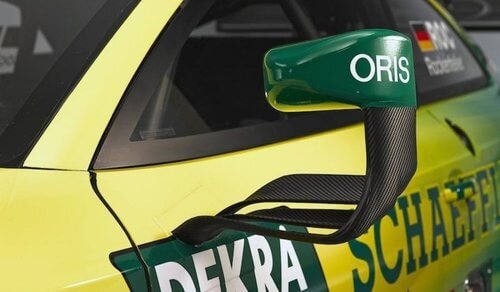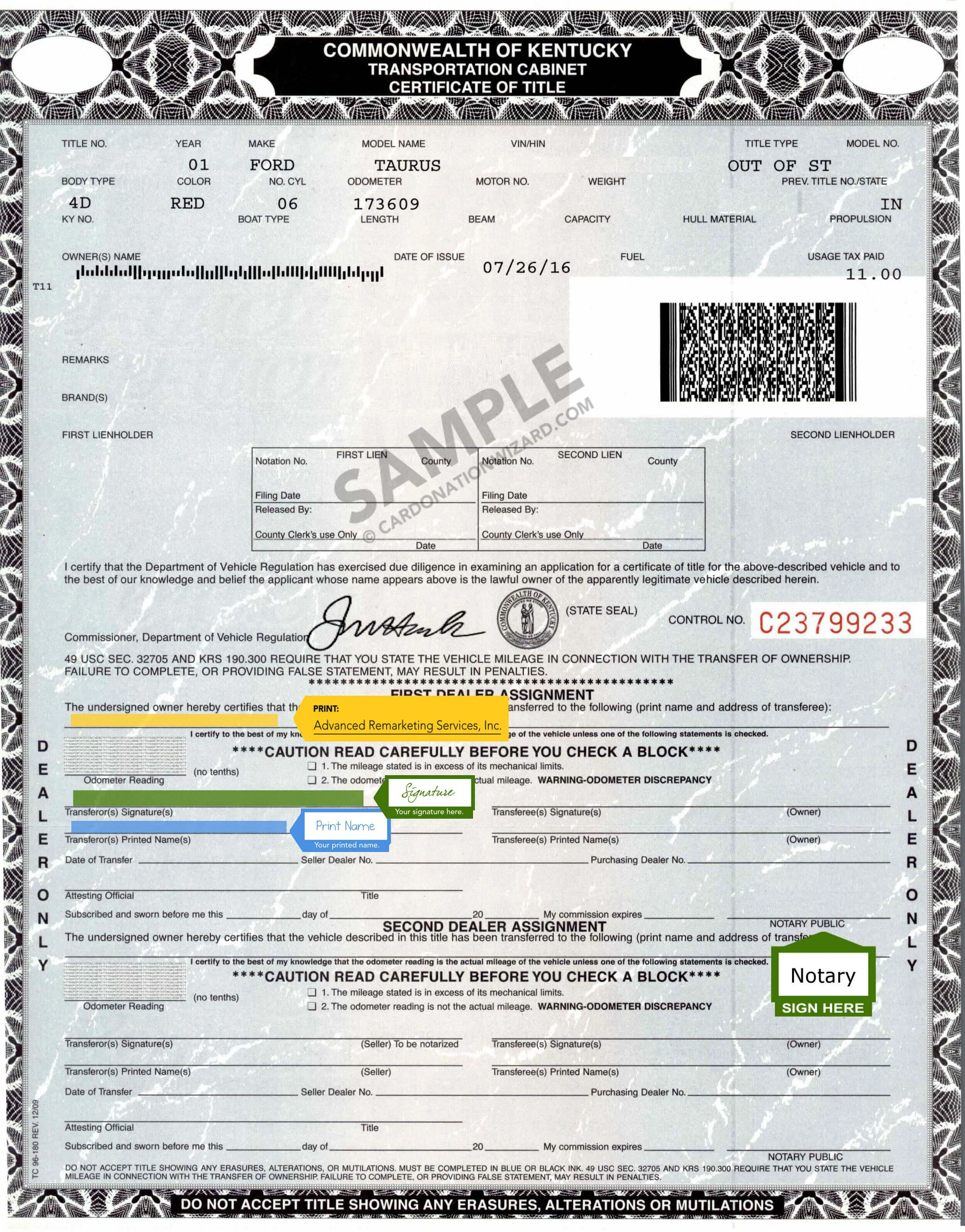You’ve just finished creating a custom-built car and you couldn’t be prouder of yourself – but now what? After you’ve put all that time, energy and money into making a custom ride, you want to protect it by titling and registering it. Just like with any car, it is possible to title a homemade vehicle or “kit car” with a little effort. You can even get a new VIN number for a kit car or homemade vehicle with just a little effort.
Of course, if you would prefer to skip the hassle and save time, let us do the work for you. We can obtain a new title and registration for cars, motorcycles, and almost anything with wheels – even some kit cars.
How Do You Register and Title a Home-Built Vehicle?
Standard registration items
Your local DMV or state office oversees registering of homemade vehicles. Every state will require a list of standard registration items, including:
Appropriate application forms for title and registration
Special vehicle safety inspection
Emissions testing certificate, if applicable
Custom constructions need to be inspected by a state body instead of just the local inspection shop. Oftentimes, custom-built cars require a different smog check than a standard vehicle would. Consult the rules and regulations in your city and state to be sure.
Insurance and transport during registration
If you don’t have insurance yet, you can usually transport your kit car to the inspection facility on a trailer. Keep in mind that road use will require active insurance and insurance usually requires an active VIN, so plan your steps accordingly.
Specific Documents Needed to Register a Kit Car
Some states may require a brake and light adjustment certificate, extended emissions testing, and other paperwork in addition to these items. The DMV often requires extra details when registering a kit car or homemade vehicle, including:
Detailed photographs and receipts of the car’s components
Statement of Construction or equivalent parts list
Valid VIN number or Manufacturer’s Certificate of Origin (MCO)
Certificate of Origin or Confirmed VIN Number
If you’re titling a manufactured kit car from a company like Superformance or Factory Five Racing, the vendor will provide a Manufacturer’s Certificate of Origin (MCO) that the DMV will need during registration.
If you’re titling a homebuilt vehicle or one where the frame and body do not have a VIN number, the state will issue a state-assigned VIN after the car passes inspection. There are also services you can look into that will get you a new VIN using the state’s legal process.
Statement of Construction
A Statement of Construction provides detailed information on the parts and methods used in the car’s construction. Though your state may not call it by that name, when registering a homebuilt car you will be asked to prove that you used roadworthy and safe parts to ensure the safety of yourself and others. This could also come in the form of receipts and manufacturer descriptions of critical components.
Photographs and receipts for components
In addition to a state-sanctioned safety inspection, the DMV will usually require receipts and photographs from all major components used in the kit car’s construction. You want to have bills of sale, junkyard receipts, invoices and manufacturers’ certificates on any major parts you used in building the vehicle to prove roadworthiness.
Do Homemade Trailers Need to be Registered?
Most of this guide applies to trailers as well. Do those need to be titled and registered as well? It all depends on what state you live in. Many states will require you to title your trailer if it weighs over a certain amount. For example, all trailers over 4,000 pounds in Texas must have a title and registration while New York requires that any homemade trailer must have a title regardless of weight.
Other states require no title for any trailers at all, even manufactured ones.
Typically, this is the process to register a homemade trailer:
Weigh the trailer
Have a safety inspection performed
Write up a detailed description of how the trailer was made
Take photos of the construction and provide parts receipts
Insure the trailer if needed
Submit paperwork to the DMV
Pay all associated titling fees
Some states may require the parts description to be notarized. Some states may also allow you to estimate the weight of your homemade trailer based on its components. Check your state’s DMV website for the facts specific to your state.
What Street Legal Parts Does a Kit Car Need?
Making a kit car street legal means ensuring that all the necessary safety equipment is added to your car. While each state requires different things, some items are required regardless of where you are. It’s wise to consider this before you build a homemade vehicle. It will save you a lot of headaches later.
While each state requires different things, some items are required regardless of where you are. In most states, what follows are the minimum required street legal parts for a homemade vehicle. They must all be functional and securely attached.
Horn
Every vehicle must have an audible horn that can be heard up to 200 feet away. It can usually play any sound your desire as long as the minimum volume threshold is met.
Windshield
This keeps debris from getting into your eyes. It’s worth noting that most states do not allow you to tint the front windshield, though it may not be required to be made from glass or cover the cockpit in the traditional way.
Hood
In some circumstances, your state may require the vehicle to have a hood. There might even be some regulations on the air intakes or hood scoops as well. Sometimes, these intakes can’t be more than four inches higher than the hood itself to ensure visibility from the driver’s seat. The method of securing the hood might come into question as well.
Mirrors
The bare minimum requirement in most states is that kit cars and homemade vehicles have at least two mirrors – though the shape and anchor style are often unrestricted. This includes the driver’s door and the interior rear-view mirror. A passenger’s side mirror may not be required.
Windshield wipers
You don’t want to be in snow, rain, or foggy conditions without wipers – and the state doesn’t want that, either.
Steering wheel
Of course, if you want to drive the car, having a steering wheel makes complete sense. Some laws limit the type of steering wheel you use. For example, you might not be able to use a fighter jet joystick or butterfly-shaped wheel. Instead, it’s likely you are required to have a circular wheel that measures at least 13 inches in diameter – and some states may not allow it to have a quick release.
Seat belts
You aren’t getting around this requirement as it is mandatory in every state. The points of contact required may vary.
Brakes
You will need to stop using roadgoing brake components, but interestingly many states do not require the use of a parking brake.
Fenders and tires
It would be difficult to have a homemade vehicle without tires, but there are some regulations as to how they are installed. Check with your state to find out if the front or rear tires need to be covered by a fender or mud flap. Regardless, tires must be DOT approved.
Muffler
We understand that putting emission control systems and exhaust on your vehicle hurts engine performance, but most times you don’t have a choice if you want to title your kit car legally. Mufflers and catalytic converters provide pollution and noise control and help stifle emissions. It’s imperative that you mount these components correctly because of how hot they get during operation.
Don’t worry, the state will double-check your work at the inspection – and a serious emissions test might be in store depending on where you have it registered.
License plates
The area to hold a rear license plate needs to be illuminated, and some states require two different bulbs in case one bulb goes out. Some states also require that you have spots for two license plates – one in the front and another in the back. These usually cannot be obscured.
Reflectors
If you’ve noticed a car sitting on the side of the road at night with its lights off, you can thank reflectors for that. All street-legal homebuilt vehicles will need to have rear and side reflectors. The side reflectors must be amber in color and the rear reflectors must be red, though the number and positioning vary by state.
Lights
Most vehicles must employ turn signals, stop lights, tail lights, and headlights. They must all be housed with DOT-approved coverings and must contain DOT-approved street legal bulbs. Many states require that these lights be switchable.
Ground clearance and bumper height
Many states require a minimum clearance for a kit car to be street legal. Sometimes this is measured as body clearance, while other times it is measured by wheel size (a car with 5” wheels and tires couldn’t navigate city streets). You’ll also want to check your local laws regarding adjustable hydraulic and air suspension systems on custom construction vehicles.
Some states will not allow vehicles that exceed certain height limitations. Even if your state doesn’t mind a 20-foot-tall kit car driving around, you should consider your ability to clear bridges, signs, and other obstacles you will encounter around town. Critically, your front and rear bumper height is most likely governed by legal requirements.
How Much Does It Cost to Register a Kit Car?
The short answer – if you are asking this question, you’re not in the right mindset.
Building a homemade vehicle isn’t really about saving money, but more about the thrill of the project itself. Total cost is going to solely depend on what you are building and where it’s registered. If you want a hot rod with high-performance power, plan on spending lots of time and money. If you wish to create a street legal dune buggy with a Volkswagen engine, you will pay far less, but it’ll still take a lot of work to make the dream come alive.
You have to think about lots of technical components such as the engine, transmission, suspension and electronics of the vehicle, not to mention these boring details of how to title and register a homebuilt car, but it’ll all be worth when you can get out and enjoy the open road in a car you made yourself. For more details than we can provide, it’s best to check out your favorite kit car forums or call your local DMV for a quick chat.
Want us to title your kit car for you? Get more information below
What is the Easiest Way to Get a Title for a Homemade Vehicle?
Once you are ready to title a homemade vehicle, we can help. As enthusiasts ourselves, the title specialists at Dirt Legal work with people every day who want to make their dreams a street-legal reality. From two-stroke dirt bikes to homemade go-karts, we can get a new title and registration for just about anything with wheels.
Due to the custom nature of homebuilt cars, we ask that you contact us for a no-obligation chat to see if our services are a match for your needs.
We are not attorneys. This article is not legal advice. Cover image source

















Selling a vehicle that's registered in a Montana LLC may seem complex, but it's actually a straightforward process. Whether you plan to sell the vehicle on its own or include the LLC in the transaction, there are several advantages to consider. From avoiding sales tax to making the transition easier for the buyer, a Montana LLC can streamline the sale. This article walks you through the steps, legal considerations, and best practices for successfully selling your vehicle, while also helping you decide whether to keep or transfer your LLC.